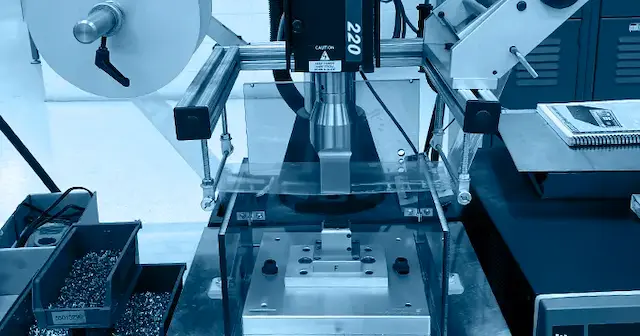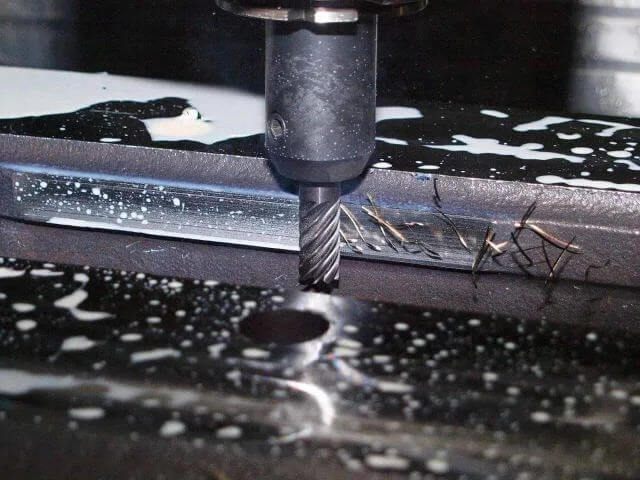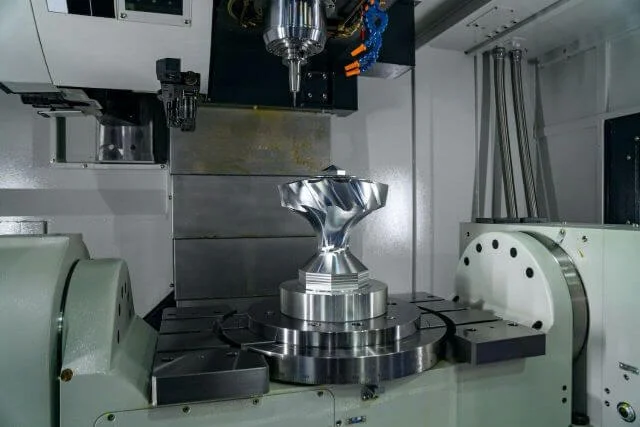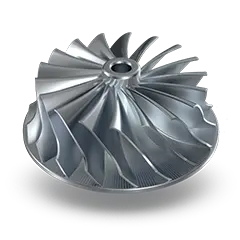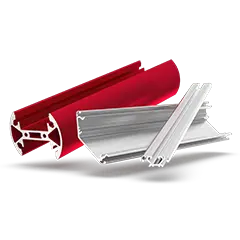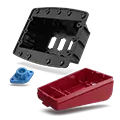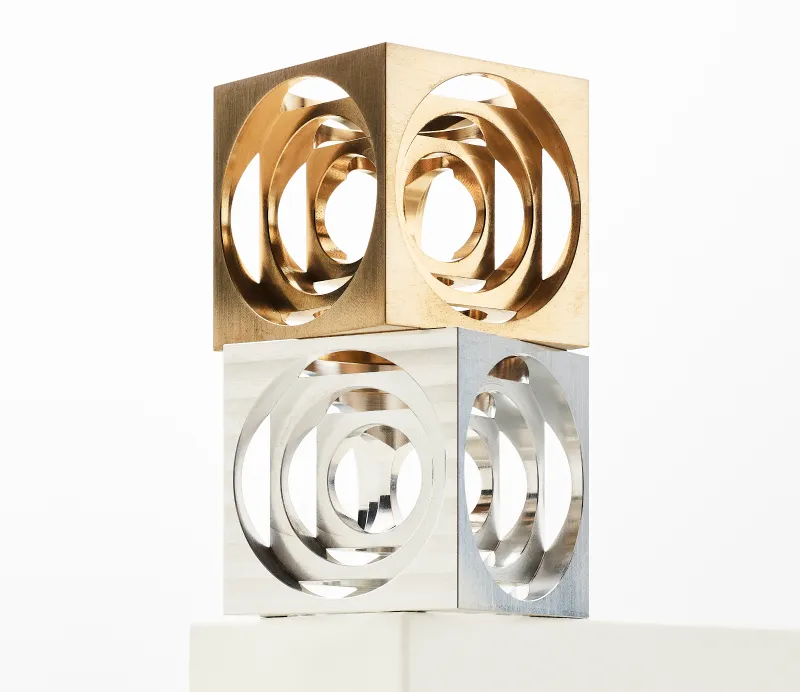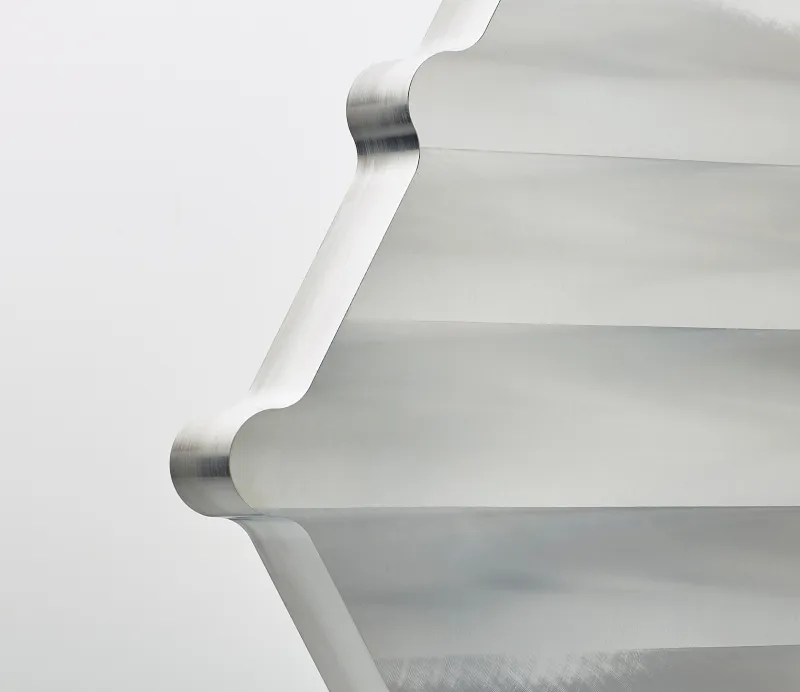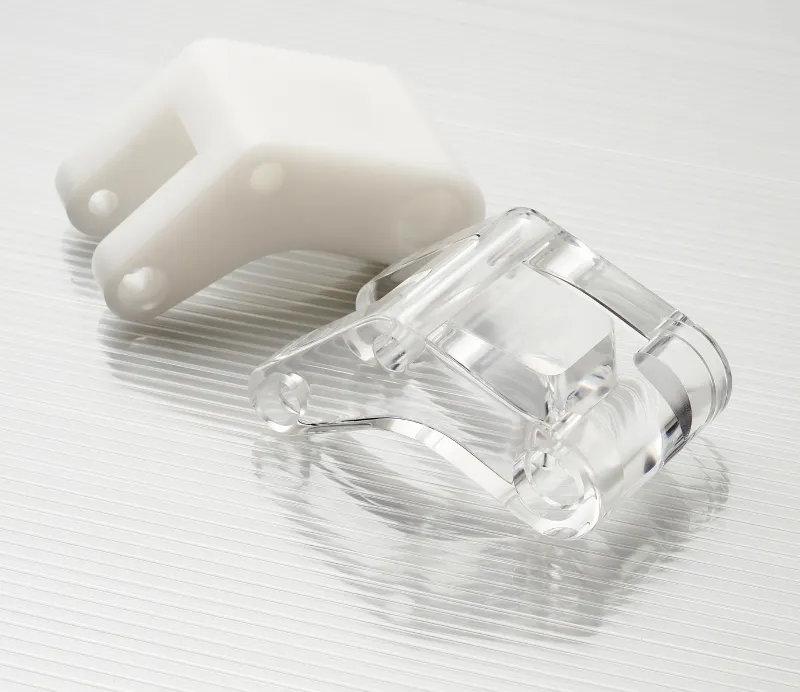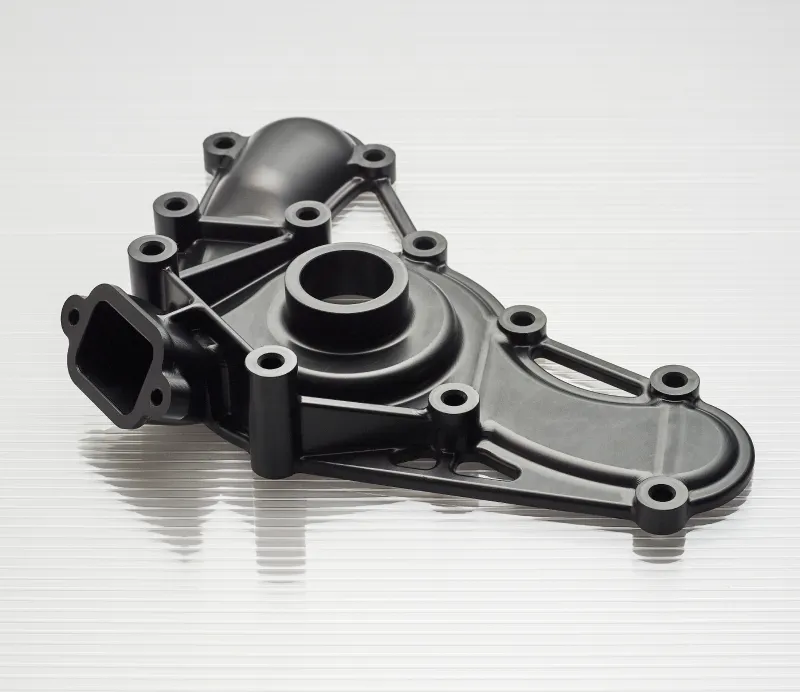How much does CNC machining cost?
CNC machining per hour can vary from £10 to £21 in China and around £30 the UK. But the main factors determining how much a CNC machining project will cost are the design, material and quantity.
.webp)
Introduction
When designing a part for CNC machining, three main factors will affect the cost of your part: Design, Material and Quantity. The design will affect the technology required for machining the part; 3-axis CNC, 5-axis CNC or CNC Turning. The material will affect the parts price depending on the raw material costs and the material's machinability. Finally, the quantity will affect the unit costs, as machining in higher volumes benefits from the economies of scale.
CNC machining is a subtractive machining technology that entails both CNC Milling and Turning. The process uses physical cutting to remove material from a solid block of material (known as the blank or workpiece) using a cutting tool. CNC machining costs vary from £10 - £21 per hour in China and around £30 per hour in the UK. The main driving factors of cost are labour, time and energy.
In this article, five different parts ranging in size and complexity have been simulated for production. Each simulation has been run in aluminium and stainless steel over a range of quantities. This data will show what affects the part cost and lead time, allowing you to make the right design choices when designing a part for CNC machining.
If you need a deep dive into designing a part for CNC machining, check out our CNC Machining Guide.
We also have pricing guides for the following manufacturing methods: Injection Moulding, Aluminium Extrusions and Aluminium Die-casting parts.
{{cta-banner}}
3-axis CNC machining costs, small part
.webp)
Below is the cost comparison between Aluminium and Stainless steel for a simple CNC machined part. There is also a comparison with how the price and lead time change according to the number of parts ordered.
For a simple part machined out of aluminium, we can see that going from 1x to 100x has a 51% unit price saving. Going from 100x to 1000x only sees an additional cost saving of 2%. This demonstrates how increasing the part quantity significantly reduces part cost for smaller volume orders. However, there are diminishing returns when looking at the higher quantities. This is why engineers will look to alternative manufacturing methods, such as die casting, for higher volume orders. The lead time only increases by two days, going from 1x to 10x, but sees a significant price reduction of 36% per part. This is because it takes a similar amount of work to set up a project if 1x or 10x parts are being machined.
A simple part machined out of stainless steel has the same trends regarding quantity. However, the cost savings aren’t as much with going from 1x to 100x, seeing a 40% saving in the unit price and a 3% additional saving going to 1000x. A notable point is stainless steel costs roughly double the price of aluminium for a simple CNC-machined part. This is due to the increase in raw material costs and the physical hardness of the material, increasing tool wear.
If you want to know more about CNC machining materials, read our article about choosing the right metal for CNC machining projects.
{{cta-banner}}
3-axis CNC machining costs, large part
.webp)
Below is the cost comparison between Aluminium and Stainless steel for a simple large CNC machined part. There is also a comparison with how the price and lead time change according to the number of parts ordered.
We see a comparable trend for a large simple part machined out of aluminium to the smaller CNC machined part, with a saving of 43% going from 1x to 100x. Also, with a smaller saving of 2%, going from 100x to 1000x. By looking at the bounding area of the larger and smaller CNC machined part, we can see the substantial increase in cost to machine a bigger part. This is mainly due to raw material costs and longer machining times. The larger the part, the more material required and the more material that needs to be machined.
A simple part machined out of stainless steel follows a similar trend to aluminium; however, the cost savings aren’t as large when machining higher volumes and going from 1x to 100x, seeing a 36% saving in the unit price and a 3% additional saving going to 1000x. Comparing the small and large CNC machined parts, we can see that for the large part, the cost savings aren’t as great for higher volumes. This is because multiple small parts can be machined from one block of material, but larger parts will often have to be machined one at a time.
Surface finish comparison

The table and bar chart below shows the cost and lead time for different surface finishes for the large aluminium machined part analysed above.
Mirror polishing is by far the most expensive finish method, with an additional cost of 66% compared to an as machined finish. This is due to mirror polishing being a time consuming hand process, which is also reflected in the increased lead time of two days. Additionally a higher grade of aluminium, such as Al7075, must be used, which further increases the price.
Anodising is relatively cheap finishing method, only adding 1% to the cost, as parts can be finished in big batches of parts from other projects. Bead blasting has a greater effect adding 10% on to the part cost due to the semi automated finish procedure. Both methods only add an additional day to the lead time.
If you want to read more on the surface finishes available for CNC machined parts, check out the Surface Finishes section of our CNC machining guide.
5-axis CNC machining costs, small and complex part
.webp)
Below is a comparison for a complex part that requires 5-axis CNC machining. We compared the price and lead time for a range of different quantities.
We can see from the data that the economies of scale have a massive effect of 5-axis machined parts. By increasing the order quantity from 1x to 10x, we see a decrease in the part cost of 66%; however, the lead time remains the same. Manufacturing up to 1000x parts sees a incredible saving of 85%. This is due to the improved efficiency of machining. 5-axis parts are complex and take a lot of time to setup/program the first time around. Once the engineer has worked out the best way to machine the part, manufacturing more parts takes a fraction of the time.
5-axis CNC machining costs, large part
.webp)
This is a larger 5-axis CNC machined part, where we again compare the unit cost and lead time but in two different materials, aluminium and stainless steel.
The data shows there aren’t the same cost savings for the smaller 5-axis part. Going from 1x to 10x, there is a 24% and 25% saving in aluminium and stainless steel, respectively. There is also an added three days to the lead time. Manufacturing 1000x will reduce costs by 53% but pushes the lead time to 100 days. This denominates how big 5-axis parts take a considerable about of material and time to machine, so the prices can only fall so far.
5-axis machining follows a similar trend to 3-axis machining in that the cost savings are more pronounced for aluminium than for stainless steel. Aluminium parts are approximately half the price of stainless steel due to the raw material costs and the material's machinability.
If your parts are getting quoted too expensive, read our article to find cost-reduction tips for CNC machining projects.
CNC turning costs, small part
.webp)
The final machining comparison is for a small simple CNC Turned part with an M14 external thread. Again we compare how the cost and lead time change with the quantity ordered.
CNC turning is a very cost-effective machining method when manufacturing in higher volumes. The data shows going from 1x to 100x in aluminium results in an 83% saving but doesn’t affect the lead time. This is because turning is a fast, scaleable process, so once the engineer has set up the part, going from 1x to 100x doesn’t require much additional labour. Increasing the quantity to 1000x sees a large price reduction of 94%, but rising to 10,000x sees a much smaller saving of ~0.5% as manufacturing efficiency is fully optimised.
Stainless steel tracks aluminium with similar percentage price reductions. However, the raw material costs are more, so the starting price is higher. CNC turning is a faster machining method than 3-axis CNC machining, as highlighted when comparing the lead time between the two methods for a small part.
How Much Do CNC Machines Cost?
When considering the cost of CNC machining, it's essential to also understand the initial investment required for CNC machines. The price of CNC machines can vary widely based on several factors:
- Type of Machine - There are various types of CNC machines, including milling machines, lathes, plasma cutters, and more. Each has its own price range. For instance, a basic CNC milling machine might cost anywhere from £15,000 to £40,000, while high-end models can go up to £150,000 or more.
- Size and Capacity - Larger machines designed for industrial applications will generally be more expensive than smaller ones intended for hobbyists or small-scale production.
- Features and Specifications - Machines with advanced features, higher precision, and faster speeds will come with a heftier price tag. For example, a 5-axis CNC machine will typically be more expensive than a 3-axis one.
- Brand and Manufacturer - Established brands known for their quality and reliability might charge a premium for their machines. However, investing in a reputable brand can often mean fewer maintenance issues and longer machine lifespan.
- Additional Costs - Beyond the machine itself, potential buyers should also consider costs related to installation, training, software, and maintenance. These can add a significant amount to the overall investment.
While the upfront cost of a CNC machine can be substantial, the precision, efficiency, and consistency they offer can lead to significant long-term benefits. If you're looking to harness the advantages of CNC machining without the initial investment, consider partnering with a trusted provider. Get It Made's CNC machining services offer top-tier quality and expertise, ensuring your projects are executed to perfection. Reach out to us today to discuss your requirements and discover how we can make your manufacturing goals a reality.
Summary
- Smaller CNC machined parts see a more significant price reduction with increasing quantities until order volume approach 1000x, where alternative methods such as die casting should be considered.
- Material selection is essential when trying to reduce part costs. It is important to consider the material's raw cost and machinability. Aluminium consistently works out cheaper than stainless steel.
- Selecting the correct finishing method is vital, as costs can vary significantly. Mirror polishing greatly affects the part price, whereas bead blasting and anodising only increase the price fractionally.
- 5-axis CNC machined parts are much more expensive and take longer to machine than 3-axis CNC machined parts. Therefore, it is recommended to design your part for 3-axis machining and only use 5-axis machining if design limitations require it.
- If 5-axis machining is required, manufacturing multiple parts at once is advisable, as you can see significant cost savings compared to machining just one part at a time. However, the lead time doesn’t increase until moving into much higher quantities.
- CNC turning is the most cost-effective manufacturing method in both speed and cost. Manufacturing parts in high quantities reduces unit costs hugely, so if you can design your parts with rotational symmetry, you can benefit from the improved speed and cost.
Ready to see how much your part costs to manufacture? Request a free CNC machining quote today, and one of our engineers will review your project within 24 hours.
Check our Resources section to find all the information you need for designing and manufacturing.

Leave it to our manufacturing specialists
Get a 24 hour, engineer made quote and design review to start your manufacturing project off on the right foot
Get your production-ready quote in 24 hours
All projects are reviewed by real engineers to ensure accuracy, catch mistakes and unlock DFM improvements
Our services
From 3D printing to CNC machining, we’re experts in manufacturing bespoke precision parts on tight time-frames
Other services
It’s rare you only need CNC machining services. We offer 3D printing, moulding, casting, extrusion, fabrication, assembly, welding & more.
Get your production-ready quote in 24 hours
All projects are reviewed by real engineers to ensure accuracy, catch mistakes and unlock DFM improvements
Bespoke quote in 24 hours
Get It Made is proud to provide a human service. Get a quote and free design review by an experienced engineer to see how we make manufacturing simple.


